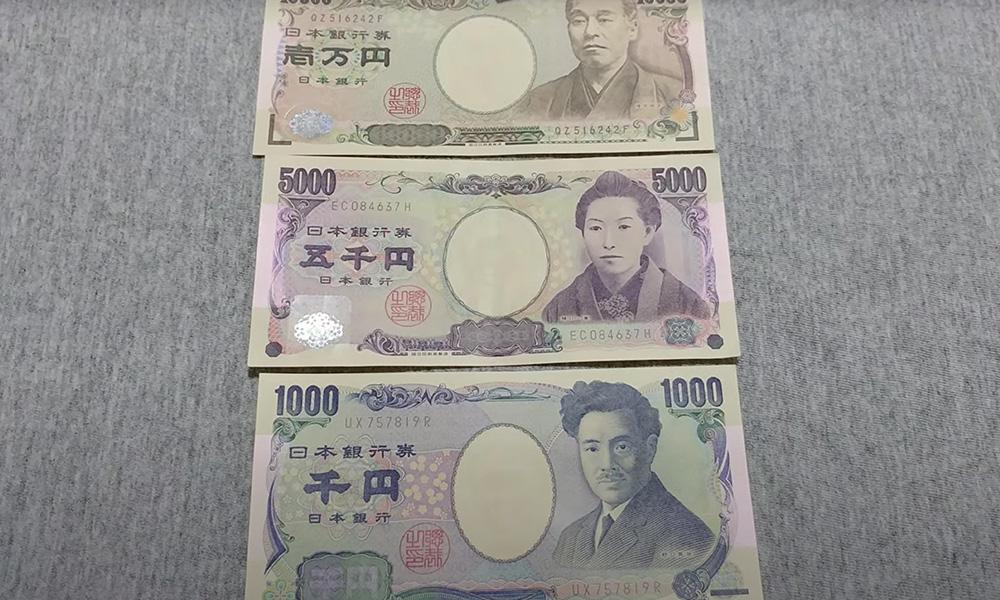Breaking News! Japan's Komeito and Liberal Democratic Parties split, putting an end to Sanae Takaichi's dream of becoming prime minister?
2025-10-10 15:43:34
Sanae Takaichi said on Thursday that once she is elected as the next prime minister by parliament, she will immediately order the formulation of a basket of measures to ease the impact of rising living costs on the economy. The withdrawal of the Komeito Party may shake the current situation that Sanae Takaichi will be elected as the next prime minister, which will have a profound impact on Japan's domestic affairs and incidentally lead to a shift in Japan's economic policy that is biased towards expansion and stimulus.

Civic Party is an important voting bloc in the Prime Minister election
According to the results of the October 2024 House of Representatives election, the Komeito Party holds 24 seats in Japan's House of Representatives, giving it a theoretical 24 votes in the House of Representatives vote, which is the prime minister's designated election. This number of votes represents a significant portion of the ruling coalition formed by the Liberal Democratic Party and Komeito. Although the two parties' combined 215 seats fall short of a majority in the House of Representatives (233 seats), Komeito's support remains crucial for the LDP to maintain its power.
Looking back at Shigeru Ishiba's previous campaign, the Komeito Party and the Liberal Democratic Party jointly supported him in the November 2024 prime ministerial nomination election. In the first round of voting in the House of Representatives, Ishiba received 222 votes (including 24 from the Komeito Party), falling short of a majority, entering a runoff. In the runoff, Ishiba won again with 221 votes, with all 24 Komeito Party votes counted. This result demonstrates the close partnership between the Komeito Party and the LDP in governing, as the Komeito Party chose to maintain its coalition government despite the LDP's crushing election defeat.
Facing the next prime minister election, the leader of the Komeito Party has expressed his intention to withdraw from the ruling coalition to the leader of the Liberal Democratic Party, Sanae Takaichi.
Various scenarios for the next Japanese government are being discussed in Tokyo, including the possibility that new Liberal Democratic Party President Sanae Takaichi will not succeed Shigeru Ishiba as prime minister. This has already been reflected in current Japanese market trading, with the yen surging 50 pips against the dollar.
The main differences between the Komeito Party and the Jmeito Party
New LDP President Sanae Takaichi is expected to seek cooperation with opposition parties, aiming to expand the size of the coalition government. However, the Komeito Party has grown wary of her hard-line right-wing stance. On October 4th, after meeting with Sanae in Tokyo, Saito revealed that coalition negotiations between the LDP and Komeito would begin next week.
He said: "We will conduct policy consultations around the coalition government, and if we can reach a consensus, we will form a coalition government. But at this stage, I cannot give any clear answer." This statement implies that the Komeito Party may withdraw from the coalition government, and it is also a restraint on the Liberal Democratic Party's right-wing tendency.
During the meeting with Sanae Takaichi, Saito expressed concern about her political stance. He further emphasized that it is necessary for Japan to cooperate with motivated and capable people to build an inclusive society, and called on Sanae Takaichi to discuss the issue of coexistence with foreigners.
On the issue of political funding, Saito pointed out: "One of the main reasons for the ruling party's crushing defeat in the recent election was the problem of undeclared funds. We hope that you can handle this issue properly." He also called for discussions on strengthening supervision of political parties' acceptance of donations from corporations and groups.
This is in response to Sanae Takaichi's idea of expanding the size of the coalition government before the prime minister's nomination, which was proposed during the LDP presidential campaign.
Saito revealed that he had told Sanae Takaichi: "A coalition government requires consistency in policy and ideology, which is not easy. In particular, we have serious doubts about the Japan Restoration Party's proposal to make Osaka a 'sub-capital' and the discussion related to the Osaka Metropolitan Plan."
He also warned against expanding the size of the coalition government too early: "A coalition government can only be formed after sufficient discussion, policy consensus, and unity of ideology and policy." This implied their dissatisfaction with Sanae Takaichi inheriting Abe's governing philosophy.
Komeito's withdrawal has a significant impact on the prime ministerial election
The Liberal Democratic Party (LDP) and its long-time ally Komeito have been in the minority in both the House of Representatives and the House of Councillors since recent elections, making it difficult for the bill to pass. Komeito's withdrawal has made it even more difficult for Takaichi's team to pass the bill.
If Komeito, which holds 29 seats in the House of Representatives and 25 in the House of Councillors, withdraws from its current coalition with the LDP and opposition parties actively lobby for their own leader, a non-LDP prime minister could take office. Komeito's social policies lean to the left, and it opposes constitutional reform and political positions similar to those of Abe, policies supported by Sanae Takaichi and conservatives.
While the opposition parties have different political leanings and policy objectives, they all agree on the need to tackle inflation and change the government. They hold 191 seats in Japan's House of Representatives and 101 in the House of Councillors, surpassing the LDP.
Yuichiro Tamaki, head of the recently popular Democratic Party for the People, which holds 28 seats in the House of Representatives, is said to be a possible leader if the opposition parties form a coalition, especially if the Constitutional Democratic Party, which holds about 148 seats, does not support former Prime Minister Yoshihiko Noda leading the new government.
If the second-largest opposition party, Japan Restoration Party, with about 38 seats, and other small groups join the anti-LDP alliance, the alliance will have a workable majority in the House of Representatives (465 seats) and the House of Councillors (248 seats).
Counterattack and rhetoric from Gaoshi team economists
Takuji Aida, an economist who advises Sanae Takaichi, a potential new prime minister, said the yen's current weakness is good for the economy, as aggressive fiscal spending can offset the hit to households from rising import costs.
Takuji Aida downplayed concerns that aggressive spending could further weaken the yen, pushing up import costs, fueling inflation and weighing on consumption.
"We've developed a defeatist mentality that a weaker yen is a bad thing. That's a big mistake," Takuji Aida, chief Japan economist at Credit Agricole, said on Wednesday.
The yen's current depreciation is beneficial because it coincides with rising Japanese stock prices and stronger investor confidence, he said, adding that proactive fiscal policy could ease the burden of rising import costs.
He said the sharp appreciation of the yen after the asset bubble burst prompted companies to cut or move jobs and investments overseas.
"At 140 or 150 yen to the dollar, domestic production becomes viable. This exchange rate helps drive an upward capital investment cycle and also acts as a buffer against U.S. tariffs,"
Sanae Takaichi's economic platform fully reflects the group's policy principles, which advocate active government spending to revitalize the economy.
Outlook for Bank of Japan's interest rate decision
Regarding monetary policy, Takuji Aida said that the Bank of Japan is likely to keep interest rates stable until 2027 after raising them once more early next year.
"It is clear that the Bank of Japan is on a tightening path, so it is very likely to raise the policy rate to 0.75% before January," he said.
"The BOJ will then pause its support for the government's spending plans and resume gradual tightening in 2027."
"In 2027, the effects of (Sanae Takaichi's) proactive fiscal policy will begin to show, and we will see a clear expansion of domestic demand," he said. "By then, inflation may pick up along with domestic demand, prompting the Bank of Japan to begin small, gradual interest rate hikes."
Summarize:
If it loses Komeito, the LDP will lose a significant number of coalition seats in parliament, even as it tries to consolidate support with a minority government in both houses of the Diet.
The dissolution of the coalition will create significant political uncertainty for Sanae Takaichi before she officially secures the premiership. While she is still likely to win the parliamentary vote due to continued divisions in the opposition, the loss of her longtime ally will cloud the prospects of passing a supplementary budget before the end of the year.
The policy trial and error space of the Gaoyin government has been severely compressed: if it insists on loose monetary policy, it will have to bear the political cost of yen depreciation and worsening inflation; if it turns to tightening, it may severely undermine economic recovery.
For the Bank of Japan, Governor Kazuo Ueda must maintain his independence while avoiding direct confrontation with the government. Policy vacillation is likely to become the norm. Markets should closely monitor the October Bank of Japan meeting statement and the progress of the Diet's budget deliberations, as these two events will determine the medium-term direction of the yen exchange rate and monetary policy.
- Risk Warning and Disclaimer
- The market involves risk, and trading may not be suitable for all investors. This article is for reference only and does not constitute personal investment advice, nor does it take into account certain users’ specific investment objectives, financial situation, or other needs. Any investment decisions made based on this information are at your own risk.





















